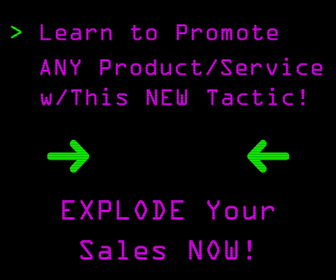Marketing is all about psychology.
To succeed, you need a deep understanding of your audience's needs, desires, and motivations.
And like academic and clinical psychology, marketing blends humanistic, intuitive approaches with hard data and quantification.
It's no surprise that there are quite a few people in marketing who actually come from a psychology background.
In a recent post over at QuickSprout, digital marketing guru Neil Patel offers some tips for understanding the psychology of your audience, which can help you better hone your marketing efforts and make a better connection with your customers.
Specifically, a lot of his advice focuses on SEO and organic search. Here are a couple pointers from the article.
1. Search queries reflect user intent
Okay, so this may not be exactly a groundbreaking statement.
Of course, search queries reflect a person’s intent.
But allow me to elaborate.
The majority of consumers are in one of the four phases of the buying funnel: awareness, research, decision, and purchase.
[image source: Quick Sprout]
Basing your keywords and content around one of these four phases should enable you to be more effective and hit your mark.
2. Long-tail is the most common search method
Using long-tail keywords is one of the older SEO strategies.
Arguably, it’s one of the few practices still relevant today.
I’m sure you’ve heard that long-tail keywords account for roughly 70% of all searches.
[image source: Quick Sprout]
It’s true.
But why am I telling you something you probably already know?
It’s because most people perform natural-sounding, longer search queries rather than shorter, disjointed ones.
Not only does this strategy decrease your competition level for keywords, you can better satisfy search engine users.
This brings us to our next point.
3. Most people use conversational search queries
Remember Google’s Hummingbird update a few years ago?
Its main emphasis was to tweak Google’s algorithm to make search results better match user intent.
This was the first solid piece of evidence that Google was evolving and becoming more “intent-centric,” attempting to understand the underlying meaning behind keywords.
This, combined with an increase in mobile voice searches (20% of mobile queries were voice searches in 2016), means one thing.
More and more search users are using a conversational tone.
And this trend is only going to continue with digital assistants becoming more and more popular.
[image source: Quick Sprout]
Here’s an example.
Rather than searching for “oil change Portland,” a person would be more likely to search for “where can I find an oil change in Portland.”
This is an important thing to keep in mind when structuring your keywords.
Using long-tail, conversational keywords “scratches the itch” of many search users.
4. People prefer short URLs
I’m sure you already know about the importance of optimizing your URLs for SEO.
You’re always better off using a descriptive URL, like yoursite.com/epic-article instead of yoursite.com/39403043034993234.
But here’s an interesting stat:
Marketing Sherpa found that short URLs are 2.5x more likely to attract a click.
I myself tend to gravitate to short, succinct URLs rather than longer, uglier ones.
Try to condense your URLs as much as possible so that they capture the essence of your content in the fewest words possible for more clicks.
5. Search users crave a great UX
An article from Vizual Archive states that today, an overlap between design/usability and SEO is much bigger than it was in the 90s and early 2000s.
[image source: Quick Sprout]
I believe this to be true.
By following correct SEO fundamentals, like including rich meta descriptions and title tags and organizing content in a logical manner, you’re improving the UX and SEO at the same time.
For more great advice on the psychology of your audience, check out the full post over at Quick Sprout.
CHALLENGE Yourself to Profit!
Free Download: Build Your Profit-Generating Online Business With This Free Blueprint
Sign Up, follow the easy steps and You'll get the tactics, strategies & techniques needed to create your online profit stream. It's free!







